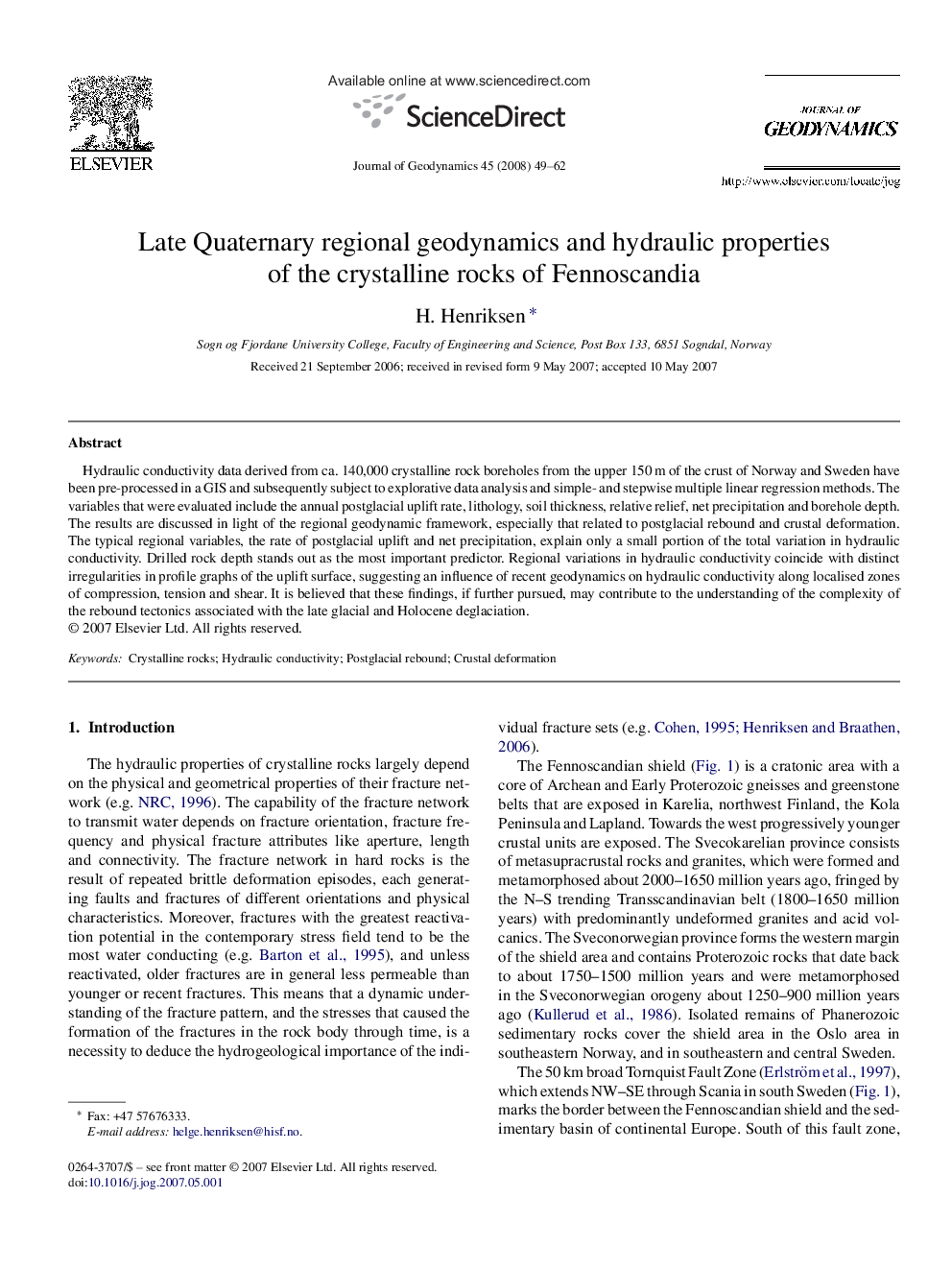| Article ID | Journal | Published Year | Pages | File Type |
|---|---|---|---|---|
| 4688726 | Journal of Geodynamics | 2008 | 14 Pages |
Abstract
Hydraulic conductivity data derived from ca. 140,000 crystalline rock boreholes from the upper 150Â m of the crust of Norway and Sweden have been pre-processed in a GIS and subsequently subject to explorative data analysis and simple- and stepwise multiple linear regression methods. The variables that were evaluated include the annual postglacial uplift rate, lithology, soil thickness, relative relief, net precipitation and borehole depth. The results are discussed in light of the regional geodynamic framework, especially that related to postglacial rebound and crustal deformation. The typical regional variables, the rate of postglacial uplift and net precipitation, explain only a small portion of the total variation in hydraulic conductivity. Drilled rock depth stands out as the most important predictor. Regional variations in hydraulic conductivity coincide with distinct irregularities in profile graphs of the uplift surface, suggesting an influence of recent geodynamics on hydraulic conductivity along localised zones of compression, tension and shear. It is believed that these findings, if further pursued, may contribute to the understanding of the complexity of the rebound tectonics associated with the late glacial and Holocene deglaciation.
Related Topics
Physical Sciences and Engineering
Earth and Planetary Sciences
Earth-Surface Processes
Authors
H. Henriksen,
